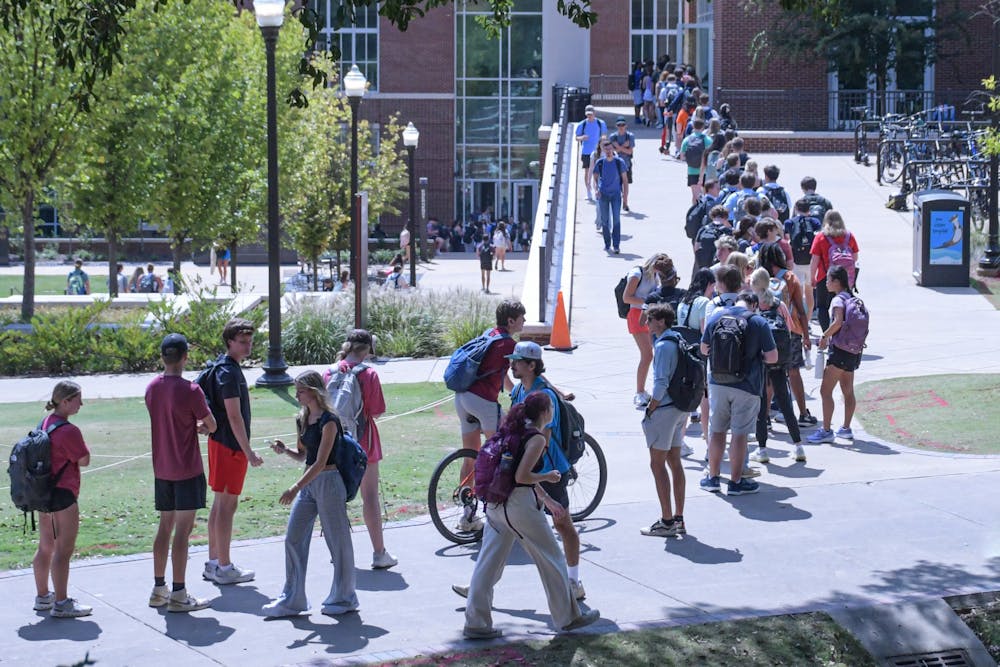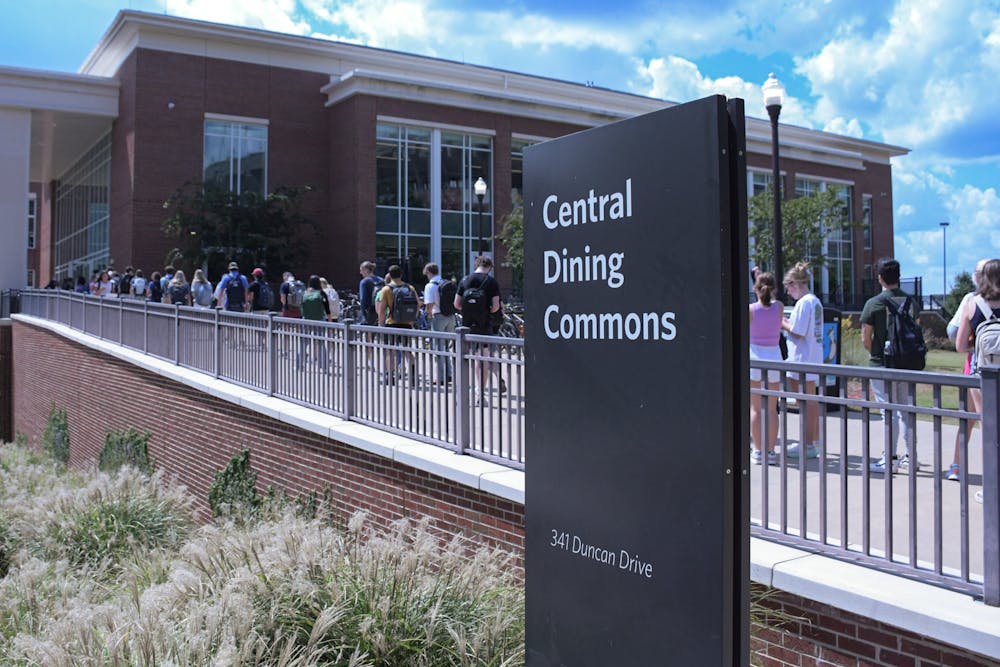Auburn University students are no strangers to waiting for lunch. In recent years, as student enrollment has risen, finding the perfect campus bite has gotten more time-consuming. The university and its contractors are making strides to meet student demand, but in the face of record student enrollment, their task seems insurmountable.
The Auburn University Office of Institutional Research released new student census data on Sept. 16, 2024. In the fall of 2024, Auburn’s full-time, on-campus student enrollment set a record high of 32,311, an increase of 1,093 students since last year, which also set records. Admitting so many new students has placed considerable strain on existing campus infrastructure, which in many cases is expanding to keep up.
Auburn Campus Dining and its primary food service contractor, Aramark, are tasked with managing Auburn’s expansion as it pertains to dining. Their primary avenues of improvement are increasing efficiency through the use of new technology and increasing the total number of dining options.
One of the newest options, Foy on the Fly, represents both efforts. As the name suggests, Foy on the Fly aims to provide timely and consistent service, with the aid of a new robot working the fryer.
“The robot just makes life a little bit easier; it speeds up service a little bit,” said Jessica Vines, an Aramark marketing representative and Auburn University catering director.
Tiger Dining also introduced a new restaurant, Inked Tacos, in the Melton Student Center in late September.
Even with these improvements, demand for campus dining options remains highly uneven.
“Foy on the Fly is about two-thirds of where we would like them to be in terms of throughput. They’re doing roughly 300 [meals] a day, and ideally, we would like for that space, with the efficiency of the robot and the team in place, to be doing 400 or 500 [meals],” Vines said.
While some options like Foy on the Fly aren’t receiving enough orders, others are frequently overloaded, including the Foy Hall Panda Express. At The Edge, Auburn’s primary dining hall, lines extend far onto the sidewalks around lunchtime, and seating is often limited. This problem is even more severe at the Student Center Chick-fil-A, where waits often exceed an hour.

“I’ve been here about an hour and ten minutes. My GrubHub said it’d be finished at about 11:24. Lo and behold, its 11:52,” said Charles Sands, junior in political science and philosophy.
“If the wait times were accurate on GrubHub, I’d be complaining about it less,” Sands said.
“The Chick-fil-A one I haven’t heard as much, but there’s a built-in kind of throttling to GrubHub, but it’s AI — it’s not perfect,” said Glenn Loughridge, director of Campus Dining and Concessions. “When you do 22,000 transactions in a day, something is going to go wrong somewhere, right? But it means that we’re always going to listen to a customer who didn’t have the best experience. There’s no question that any student who wants to walk in this office is welcome.”
Loughridge also spoke on the future of Auburn University dining options. Specifically, his office is anticipating increasing demand around the south campus, as the new education and agriculture buildings are under construction and set to be complete in the coming years. Loughridge and his team hope to set up a new food truck park in that area to meet the shifting demand.
Representatives from Auburn Dining and Aramark both freely admit to the challenges of handling Auburn’s large and growing student body. They do not possess prior information on the number of incoming students and are simply tasked with coping with each new influx of demand.
“I don’t have a five-year forecast or anything like that, but I think if you’re paying attention, we’re growing. When you grow kind of quicker than you maybe assumed you would, there are definitely opportunities for us to be more ahead of the game, but at the end of the day, it’s a good problem for us to have,” Loughridge said.
At the time of this publication, Auburn University officials within the Office of Enrollment Management have not responded to requests for comment. The decisions the office makes regarding student enrollment in the future will continue to dictate the student dining experience and the pressures faced by Campus Dining.
Do you like this story? The Plainsman doesn't accept money from tuition or student fees, and we don't charge a subscription fee. But you can donate to support The Plainsman.





